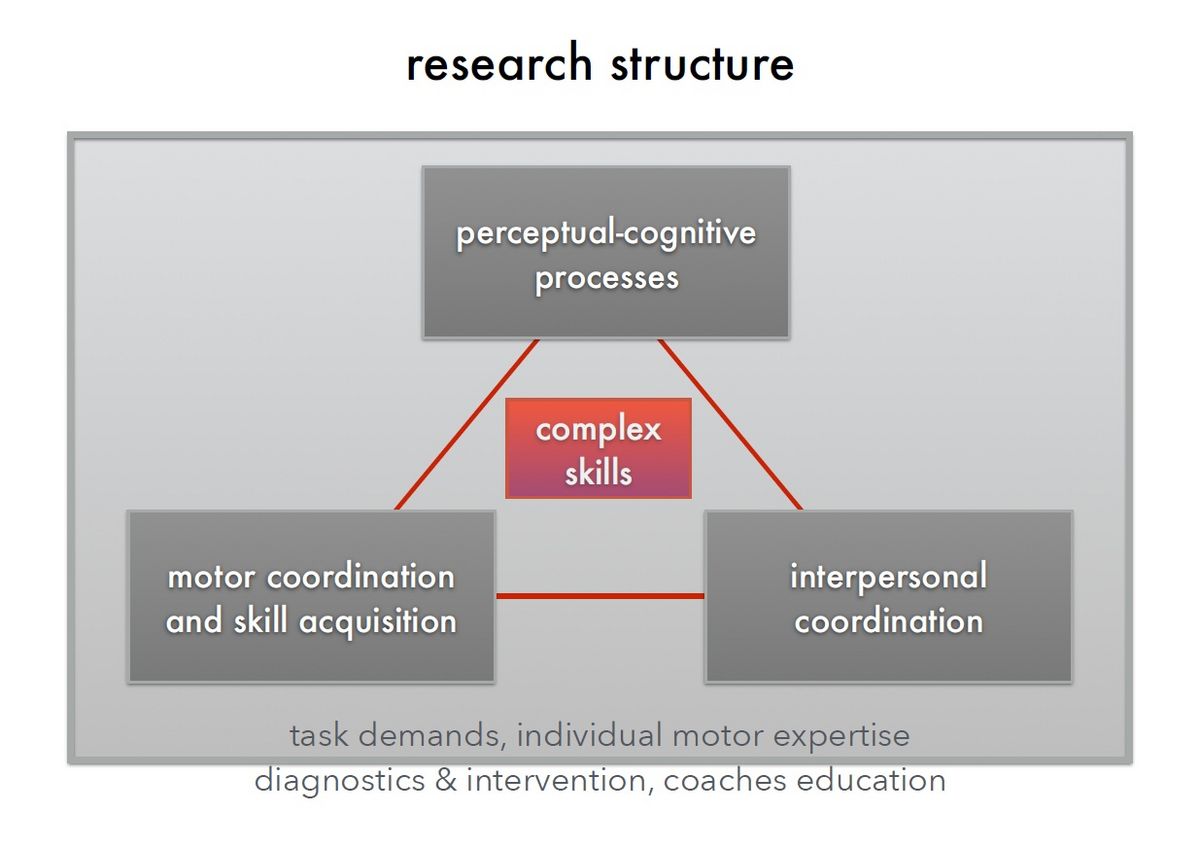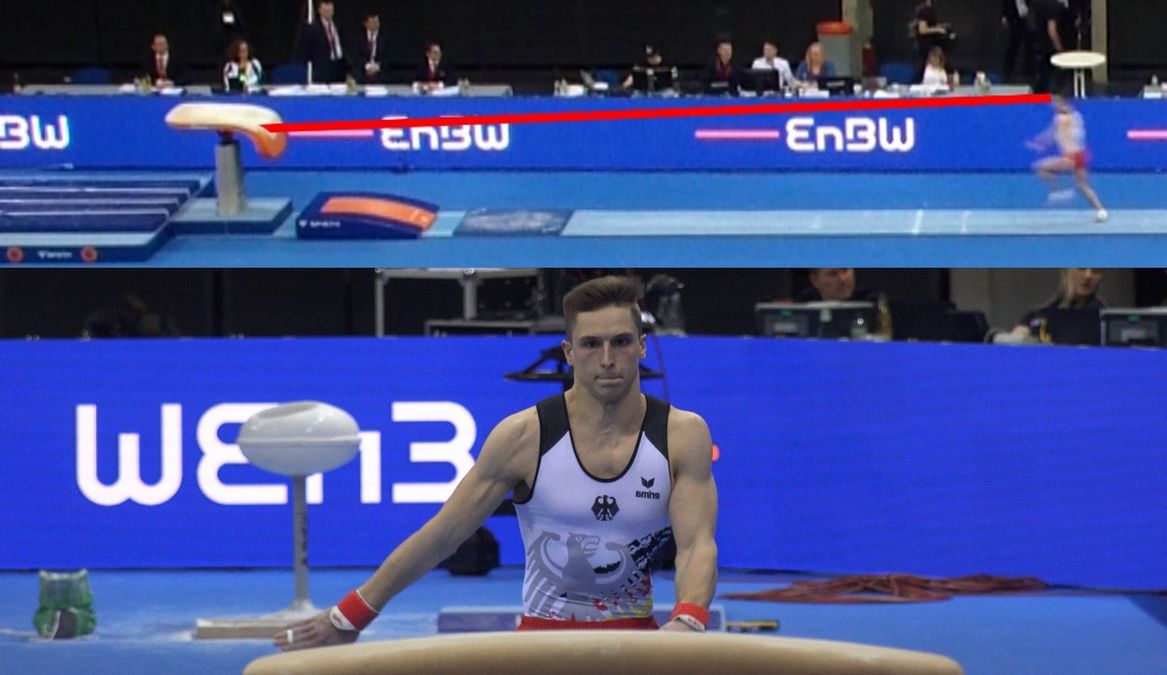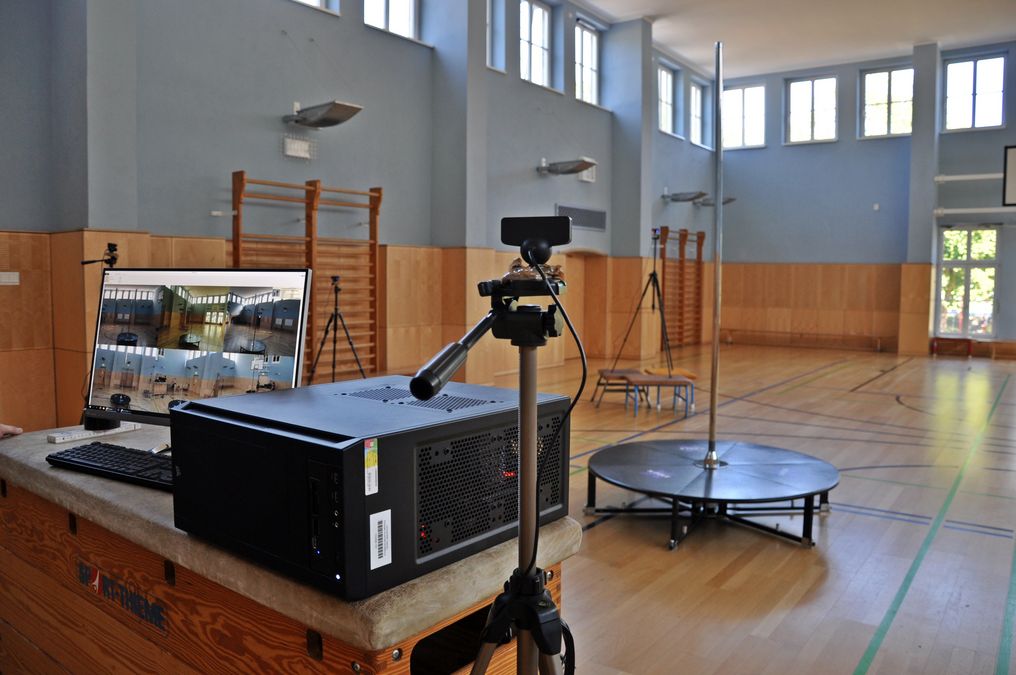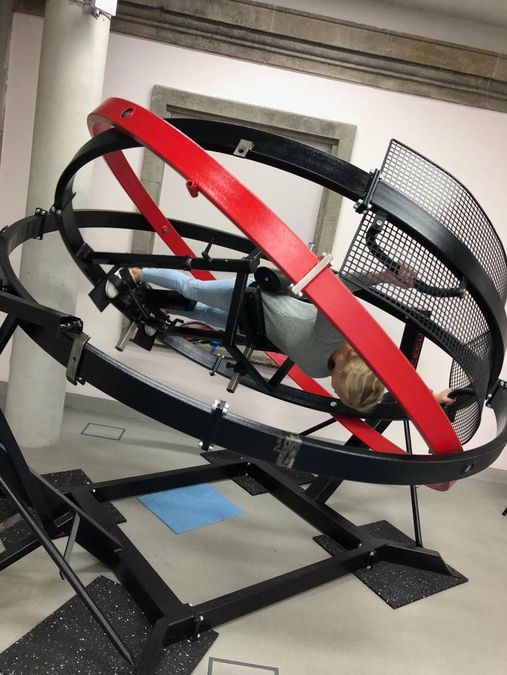In this section, you will find up-to-date information about the research focus of the chair, ongoing and completed research projects, as well as current publications
The chair is engaged in various investigations into visual and auditory perception and evaluation of complex movement executions, based on the triad of perceptual-cognitive processes, movement coordination & skill acquisition, and interpersonal coordination. Sports such as artistic gymnastics, gymnastics/dance, and martial arts are often used as subjects of investigation.
Current research work is realized along the following three main areas (and their overlapping areas):
- Perceptual-cognitive processes in complex movements
- Motor coordination and movement learning
- Interpersonal coordination
The first area focuses on understanding how processes of perception and cognition accompany motor control in complex movement actions. The second area addresses peculiarities of motor coordination and developmental trajectories in movement learning of complex actions. The third area aims to understand synchronization processes between interacting athletes. The sports focus lies on technically-compositional sports and martial arts. Various research methods are employed, including screen experiments, eye-tracking, and movement analysis.
Current & Selected Research Projects
The doctoral project on the topic of visual perception in dance began in October 2021. It aims to be a publication-based work with three articles in English. The goal of the doctoral project is to determine which movements in dance formations (group arrangements) are perceived as beautiful. The influence of design criteria according to Rosenberg (1998), namely space (dance direction) and time (movement speed), is examined.
For the three investigations, a dancer was captured using a motion capture system, based on which all dance movements are manipulated (e.g., duplicated). The first investigation focuses on the perception of dance groups in specific formations. It aims to investigate which arrangements are perceived as aesthetically pleasing by dancers and non-dancers. The perceptual study of four formations initially takes place without the group changing its position (group stationary), followed by the group performing dance movements from the styles of hip-hop and modern dance.
The second investigation focuses on the role of design criteria in dance and their influence on the perception of dance movements in a formation. The manipulation of dance direction is planned using the design criterion of space, while the design criterion of time is incorporated through variation in movement speed. All manipulated movement sequences are danced in four formations.
The third investigation explores the question of which group sizes are most liked in a formation. The investigation focuses on groups larger than 6 individuals and aims to determine which group sizes are perceived as beautiful by observers.
The work aims to investigate what people perceive as aesthetically pleasing in dance. The results of the doctoral project can support the future work of choreographers and contribute to the advancement of current research in dance and aesthetics.
The doctoral project, which began in March 2018, focuses on the auditory and visual perception of complex movements. A publication-based work is aimed for in order to approach the processes involved in movement perception. The project specifically focuses on the perception of visual and auditory information. Four different studies are planned within the project. At the current stage, two articles have been published, and a third one is in the process of publication. The first two studies compare experts and novices regarding the quality of movement perception in artistic gymnastics under three different conditions (audio-visual, visual, auditory). A three-element sequence on the floor apparatus was chosen as the subject of investigation
Based on the results of the first study, the subsequent second investigation revisits the three-part movement sequence. The focus is shifted to the auditory perception of natural movement sounds through manipulations. The results of the second study provide the foundation for the third investigation, which examines the influence of music on movement perception in women's artistic gymnastics. Furthermore, the three-part sequence on the floor is the subject of the investigation.
In the fourth study, the transfer of the results from the first study to another discipline of gymnastics (trampoline) will be carried out to examine the interaction of visual and auditory information more intensively. Additionally, the influence of auditory and visual information on movement regulation for movement evaluation will be emphasized.
The relationship between quantifiable movement execution and the observation and assessment of movement quality plays an integral role in technically acrobatic sports such as artistic gymnastics for coaches, judges, and athletes themselves. The objective of this project is threefold: in the first step, prototypical gymnastic exercises will be kinematically examined. Building upon that, the relationship between kinematic characteristics and qualitative evaluation will be analyzed. In the third step, the influence of expertise and other perception-related and cognitive variables and processes in the evaluation process will be explored. Methodologically, this will be implemented using motion analysis software, eye tracking, multivariate data analysis, and experimental designs. The project is funded through a scholarship (doctoral fellowship) and includes collaborations with the Institute of Computer Science at Leipzig University.
One of the central topics in sports psychology is Mental Training (MT). Psychologists, coaches, and athletes use MT techniques as a tool for optimizing their mental states and improving learning and performance in sports. In particular, it is suitable for supporting the learning and stabilization of movement skills in sports with high technical demands.
Based on this, it can be assumed that the performance of sports students in gymnastics can also be significantly improved through the use of MT. Building on this assumption, a psychologically oriented skill training (POFT) is designed to enhance movement visualization in sports students. The Impact of Combined POFT and Motor Training on Gymnastic Skills, Mental Visualization Ability, and Muscle Relaxation in Sports Students (Pre- to Post-Phase)
Recent & Selected Publications
The department has recently published the following selected publications:
- Heinen, T.; Frackmann, J.; Mueller, A.; Zoellner, V.
MOVEMENT REGULATION IN DISMOUNTS ON THE BALANCE BEAM
Science of Gymnastics Journal. 2024. 16 (2).
DOI: 10.52165/sgj.16.2.169-179 - Heinen, T.; Jeraj, D.; Veit, F. (Hrsg.)
Ästhetische Wahrnehmung, Bildung und Vermittlung im Turnen und in den Bewegungskünsten
Deutsche Vereinigung für Soprtwissenschaft
Hamburg: Feldhaus Verlag Edition Czwalina. 2024. - Kempe, M.
Does the direction of shapes and bodies influence the aesthetic perception of stage setups in dance?
Human Movement. 2024. 25 (1). S. 75–81.
DOI: https://doi.org/10.5114/hm.2024.136057 - Kempe, M.; Bölke, K.
Untersuchung der wahrgenommenen Ästhetik von Wettkampfrouten im Bouldern und deren Einfluss auf die Motivation
In: Köster, D. (Hrsg.) Abstractband zur 56. Jahrestagung der Arbeitsgemeinschaft für Sportpsychologie.
Berlin: Bundesinstitut für Sportwissenschaft und der Deutschen Vereinigung für Sportwissenschaft. 2024. S. 79–79.
ISBN: ISBN 978-3-00-078882-6 - Kempe, M.; Hurek, A.
Die Ästhetische Wahrnehmung von Bühnenaufstellungen im Gardetanz
In: Heinen, T.; Jeraj, D.; Veit, F. (Hrsg.) Schriften der Deutschen Vereinigung für Sportwissenschaft. Hamburg: Feldhaus Edition Czwalina. 2024. S. 30–38. - Krebs, J.; Jeraj, D.
Einfluss zweier akrobatischer Serien auf die Ausführung des Salto rückwärts gehockt
In: Heinen, T.; Scharenberg, S. (Hrsg.) Jahrestagung dvs-Kommission Gerätturnen 2024 "Leistung mit Respekt. Vom Sportunterricht bis hin zu Olympia!". Karlsruhe: KIT Scientific Publishing. 2024. S. 24–24.
DOI: 10.5445/IR/1000174860 - Bortoleto, M.; Menegaldo, F.; Valério, R.; Heinen, T.
World Gymnaestrada: reasons to join a massive gymnastics festival
Journal of Physical Education and Sport. 2023. 23 (3). S. 756–763.
DOI: 10.7752/jpes.2023.03093 - Heinen, T.; Jeraj, D.
Interpersonal Coordination in Contemporary Capoeira
In: Heinen, T.; Jeraj, D.; Vinken, P. M. (Hrsg.) Contemporary Topics in Movement Arts - Theories and Applications. New York: Nova Science Publishers Inc. 2023. S. 189-202
ISBN: 979-8886976106 - Heinen, T.; Jeraj, D.; Vinken, P. M. (Hrsg.)
Contemporary Topics in Movement Arts - Theories and Applications
New York: Nova Science Publishers Inc. 2023
ISBN: 979-8886976106 - Heinen, T.; Kempe, M.; Jeraj, D.
Teching Movement Arts and Performance
In: Heinen, T.; Jeraj, D.; Vinken, P. M. (Hrsg.) Contemporary Topics in Movement Arts - Theories and Applications. New York: Nova Science Publishers Inc. 2023. S. 133-150
ISBN: 979-8886976106 - Kempe, M.
Zur ästhetischen Wahrnehmung der Bühnenaufstellung V unter Manipulation von Richtung und Form
Abstractband Symposium: Digitalitäten und Ökologien im Feld des Tanzes (Virtual) - Ecologies in the Field of Dance. 2023 - Kempe, M.; Vinken, P. M.
What do you Like? A Study of Observing Hip-Hop Movements
In: Heinen, T. (Hrsg.) Contemporary Topics in Movement Arts. New York: Nova Science Publishers. 2023. S. 47–62.
ISBN: 979-8886976106 - Veit, F.; Heinen, T.
The Role of Auditory and Visual Information in Interpersonal Coordination in Trampoline Gymnastics
In: Heinen, T.; Jeraj, D.; Vinken, P. M. (Hrsg.) Contemporary Topics in Movement Arts - Theories and Applications. New York: Nova Science Publishers Inc. 2023. S. 33–45.
ISBN: 979-8886976106



